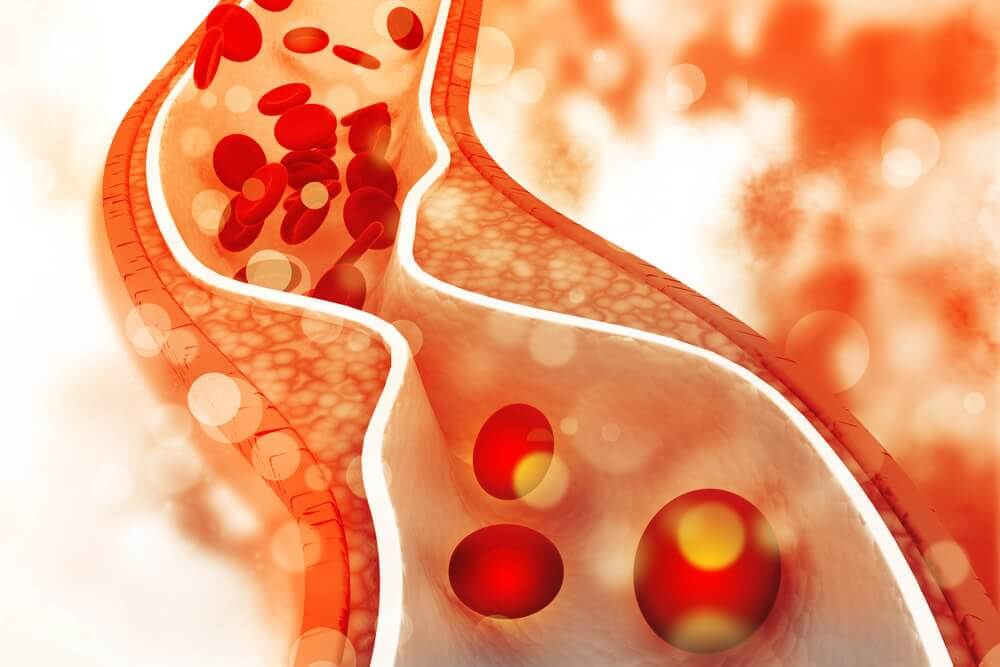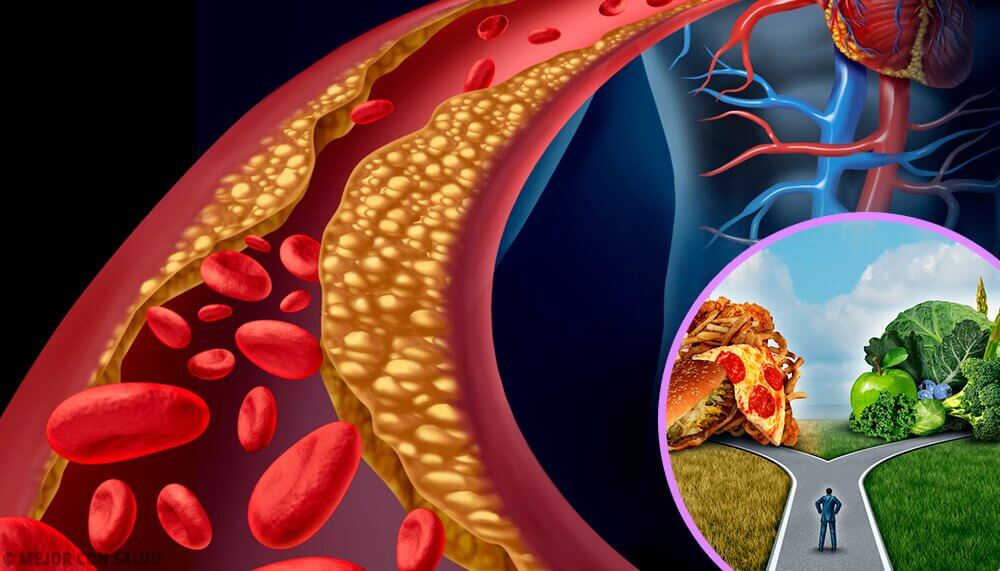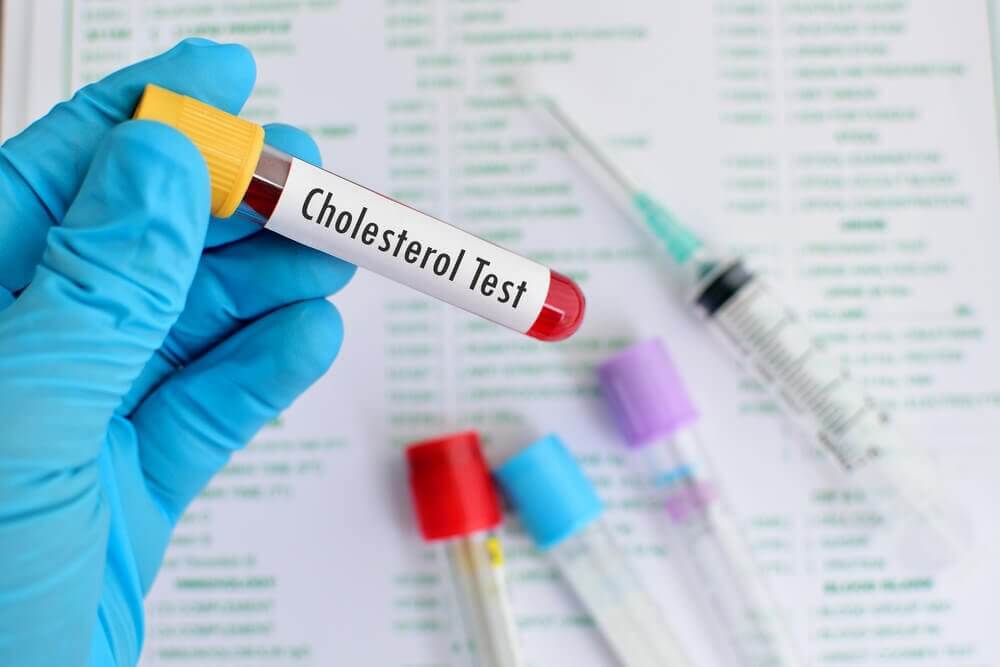When Should You Start Worrying About Optimal Cholesterol Levels?

For the proper functioning of the body, the natural lipid cholesterol is necessary.
Cholesterol is mainly made in the liver and can also be obtained by consuming certain foods. It’s found in all body cells.
It’s important to have an optimal cholesterol levels so that your body can fulfill all its functions.
The purpose of cholesterol

Types of cholesterol

- Low density lipoproteins (LDL): These carry the new cholesterol from the production sites to the rest of the body cells.
- High density lipoproteins (HDL): These are responsible for the reverse transport of cholesterol from the cells to the liver.
Thus, there are two types of cholesterol:
- “Bad” cholesterol: This is cholesterol that binds to LDL, which deposits in the arterial walls. In this case, you have to lower your levels.
- “Good” cholesterol: This is cholesterol that transports the surplus cholesterol towards the production sites when it’s attached to the HDL lipoproteins.
Why is cholesterol considered a risk factor?
- High levels of cholesterol lead to hypercholesterolemia. Therefore, it’s important to maintain an optimal level of cholesterol. It has been proven that people with cholesterol levels of 240 mg/dl have an increased risk of having a heart attack.
- Cholesterol levels may exceed the ability of HDL to return to the liver. If the cells of the body do not absorb these excess molecules at the blood level, storage occurs. This takes place in the arterial walls, which accelerates the atherosclerotic process. The narrowing of the arteries occurs little by little, which is a silent but dangerous condition.
- It’s important for patients who have already had a heart attack or are at risk of a stroke to keep their cholesterol level low. Overall, it’s very important to have clean arteries.
Optimal level of cholesterol and its variants

Next, we’ll take a look at what optimal cholesterol levels should look like.
Total cholesterol:
- Normal: less than 200 mg/dl
- Normal-high: 200 – 240 mg/dl
- High: more than 240 mg/dl
Hypercholesterolemia occurs when total cholesterol levels are higher than 200 mg/dl.
LDL Cholesterol
- Normal: less than 100 mg/dl
- Normal-high: 100-160 mg / dl
- High: more than 160 mg / dl
There are cases where the desirable level of LDL may be less than 70 mg / dL.
HDL Cholesterol
- Normal: higher than 35 mg/dl in men and 40 mg/dl in women
Triglycerides
- Normal: less than 150 mg/dl
- Normal-high: 100 – 500 mg/dl
- High: more than 500 mg/dl
Hypertriglyceridemia occurs when triglyceride levels are greater than 150 – 200 mg / dl.
Why do they perform these tests?

In general, men must have these tests before the age of 35. For women, that changes to before the age of 45. Taking these tests before these ages is a good idea if you have another condition. This includes diabetes, cardiovascular diseases, strokes, high blood pressure, or a family history of these diseases.
Follow-up tests should be done in these particular situations:
- If the values are normal, repeat the test every five years.
- In the case of people with diabetes, hypertension, cardiovascular diseases, or strokes, their case will need to be reviewed more frequently.
- Control levels should be assessed every year if the patient takes medications that help control blood cholesterol levels.
All cited sources were thoroughly reviewed by our team to ensure their quality, reliability, currency, and validity. The bibliography of this article was considered reliable and of academic or scientific accuracy.
- Barter, P., Gotto, A. M., LaRosa, J. C., Maroni, J., Szarek, M., Grundy, S. M., … Fruchart, J.-C. (2007). HDL Cholesterol, Very Low Levels of LDL Cholesterol, and Cardiovascular Events. New England Journal of Medicine. https://doi.org/10.1056/NEJMoa064278
- Hafiane, A., & Genest, J. (2013). HDL, atherosclerosis, and emerging therapies. Cholesterol. https://doi.org/10.1155/2013/891403
- Lawes, C. M. M., Hoorn, S. Vander, Law, M. R., & Rodgers, A. (2004). High cholesterol. In Comparitive Quantification of Health Risks. https://doi.org/10.1007/s11356-012-1164-x
- Khera, A. V., Cuchel, M., de la Llera-Moya, M., Rodrigues, A., Burke, M. F., Jafri, K., … Rader, D. J. (2011). Cholesterol Efflux Capacity, High-Density Lipoprotein Function, and Atherosclerosis. New England Journal of Medicine. https://doi.org/10.1056/NEJMoa1001689
- Berry, J. D., Dyer, A., Cai, X., Garside, D. B., Ning, H., Thomas, A., … Lloyd-Jones, D. M. (2012). Lifetime Risks of Cardiovascular Disease. New England Journal of Medicine. https://doi.org/10.1056/NEJMoa1012848
This text is provided for informational purposes only and does not replace consultation with a professional. If in doubt, consult your specialist.








